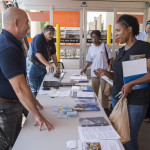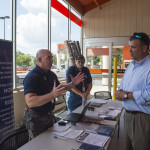ATLANTA — One year ago, record rainfall and river flooding inundated large swaths of South Carolina triggering a federal disaster declaration for thirty-five South Carolina counties. Now hard-hit communities are building back stronger. To date, assistance to residents and communities in South Carolina from the Federal Emergency Management Agency totals well over $164 million.
“We partnered with multiple agencies to assist flood survivors as they worked to recover from the South Carolina floods,” said Gracia Szczech, FEMA’s Region IV Regional Administrator. “While a year has passed, our ultimate goal remains the same – to ensure that communities continue to recover and to emerge stronger and more resilient.”
South Carolina by-the-numbers:
More than 28,000 survivors in twenty-four South Carolina counties received $89,548,894 for individual and housing assistance. Of that amount, $77,714,396 was provided for temporary housing and repairs not covered by insurance and $11,834,498 for other needs such as medical bills, moving and storage expenses, and personal property. More than 11,500 families received rental assistance during the recovery.
Eight emergency shelters housed a total population of 1,400.
FEMA inspectors surveyed more than 90,000 residences for damages (including those re-inspected on appeal).
Disaster Survivor Assistance Teams met with 65,696 survivors and 52,629 visits were made to Disaster Recovery Centers.
Disaster unemployment assistance as a result of the disaster was extended to 650 survivors.
Nearly three million meals were served under the Disaster Supplemental Nutrition Assistance Program.
Thirty-three counties and the state received $74,920,813 in Public Assistance. Of that amount, $38,264,692 was obligated for debris removal and emergency protective measures and $36,656,121 was obligated for permanent repairs to public infrastructure.
Seven counties received more than a million dollars each in Public Assistance for emergency measures or permanent repairs to public infrastructure such as roads and bridges, and public buildings and utilities. Berkeley County was the hardest hit, receiving $9,137,955 mostly for repairs.
The National Flood Insurance Program (NFIP) paid 3,866 claims for flood damages totaling $134,177,354, as of May 25, 2016. The NFIP has closed out 99 percent of the claims filed.
###
FEMA’s mission is to support our citizens and first responders to ensure that as a nation we work together to build, sustain and improve our capability to prepare for, protect against, respond to, recover from and mitigate all hazards.
Download the FEMA mobile app for disaster resources, weather alerts, and safety tips.






